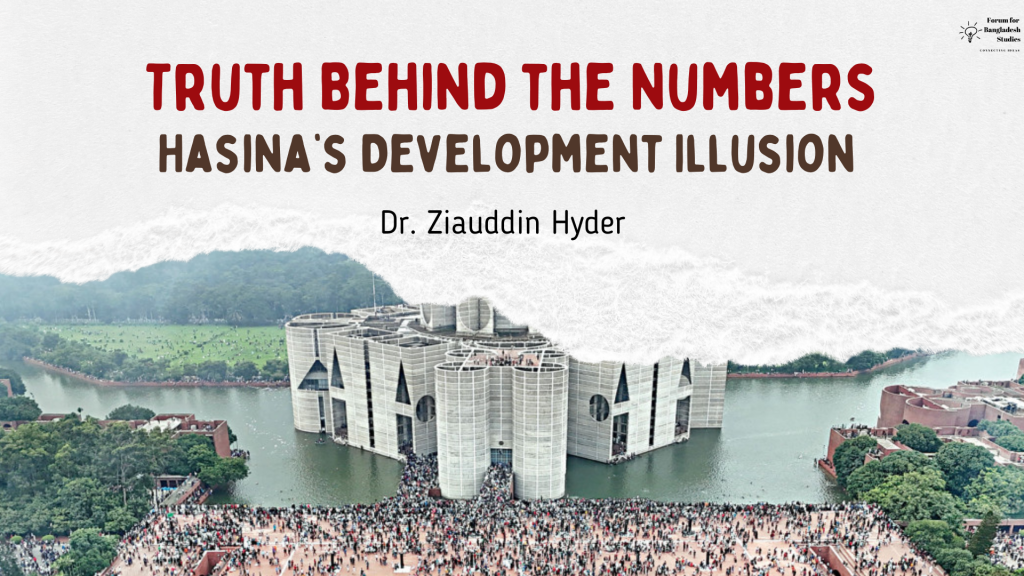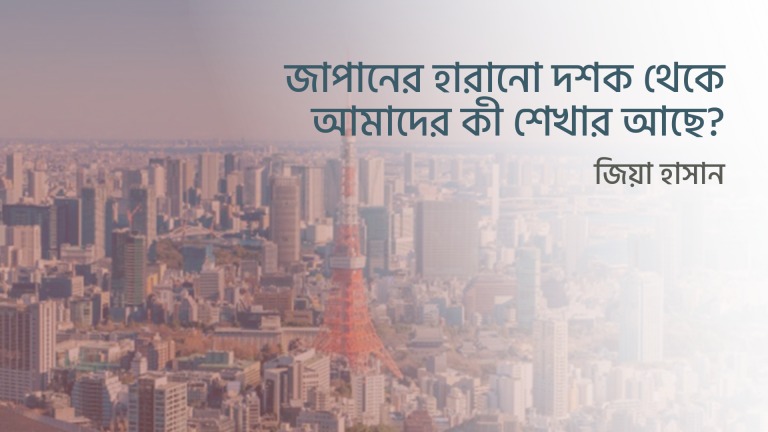Hasina fled to India by helicopter on August 5th as people-led protests toppled her 15-years rule of widespread election rigging and human rights violations – including brutal oppression on opposition party leaders and workers, extrajudicial killings and enforced disappearances. This fugitive Prime Minister tried to establish a false narrative that her government brought unprecedented development to the country since 2009 that supposedly cannot be sustained without her. To my utter surprise, most economic theorists and intellectuals in Bangladesh didn’t directly challenge this untruthful claim.
Spreading disinformation and propaganda is not uncommon in politics; particularly when a country runs away from democratic norms and values. Yet it quickly becomes a threatening concern to citizens when utilized to justify the curtailment of their rights, including oppression and breach of the rule of law. Since there will be “no development without Hasina’s regime”, it seems permissible to trample on voting rights, democracy and humanity.
Hasina’s government displayed many gimmicks to spread the narrative of “unprecedented development”, far too many to outline in just one text. Let’s take for example the partizan narrative on Gross Domestic Product (GDP), the widely used indicator of development. I, like many others working in this field, object to the use of GDP as a measure of development. For this case of Hasina’s regime, it refers to more of a well-designed “development propaganda”. After securing the state power in 2009, Hasina’s development propaganda often quoted US$102 billion as Bangladesh’s GDP, compared to then in 2022 standing at US$460 billion. This impressive statistic does portray the impression of unprecedented development in Bangladesh… so where is the catch?
First, this statistic starts 13 years ago yet one government term is normally 5 years. If you want to compare one government with another, you have to compare between two 5-year terms based on yearly statistics. It is hypocritical to show 14 years of progress here.
Second, only total GDP is presented without mentioning the GDP growth rate. If 100 taka increases by 5%, it becomes 105 taka. If 105 taka increases by 5%, it becomes 110.25 taka, but not 110 taka. The compounding nature is such that even if the growth rate remains the same, the amount of absolute growth increases gradually.
Furthermore, population growth is another factor to consider when total GDP is used to explain a government’s achievement over time. As population increases, GDP also increases due to various reasons. The most straightforward reason that can be cited is the increased level of household consumption. As population grows, household spending increases which in turns adds to the total GDP.
Finally, this statistic shows total GDP at current prices. For instance, if last year’s salary was 20,000 taka, and this year, it was increased to 21,000 taka, then how much was the overall salary increase? The salary increase is by 1,000 taka in nominal terms yet the price of goods has also increased. So when taking inflation into account, the salary increase will obviously be less than 1,000 taka.
Even with all these gimmicks aside, when comparing the GDP-based development of different governments in Bangladesh since 1990, the GDP growth rate per capita at constant prices shows a different picture of so called “unprecedented development”. The following figure, plotted using the United Nations database assuming constant 2015 prices, shows the growth rate of GDP per capita for each year between 1991 and 2021 – in purple government period led by Bangladesh Nationalist Party (BNP), in orange by Awami League, and in grey the two years of caretaker government.

Has any notable or “phenomenal” development occurred in the last 14 years? This figure illustrates that the BNP after coming to power in 1991 kickstarted a stagnant economy that were attributed to a number of drivers including market-oriented reforms, export-led growth, including the expansion of the ready-made garments industry, increased inflow of funds from Bangladeshi workers abroad, widespread access to credit and financial services through organizations like BRAC and Grameen Bank, improved crop yields and farming practices, focus on girls’ education and healthcare, improvements in transportation, energy, and telecommunications, reduced tariffs and increased trade with neighboring countries, enhancing regional connectivity, and political stability.
Awami League continued this trend from 1996 to 2002. BNP’s second term saw a real boost to the economy of Bangladesh, which has continued to this day. In between, the impact of the 2008-09 recession and the 2020-21 pandemic is also clearly visible in the data.
Even if Awami League’s claim of “unprecedented development” may hold true, it still could not justify the crisis of democracy and human rights, and therefore furthers how this claim is actually a lie and deep deception.




